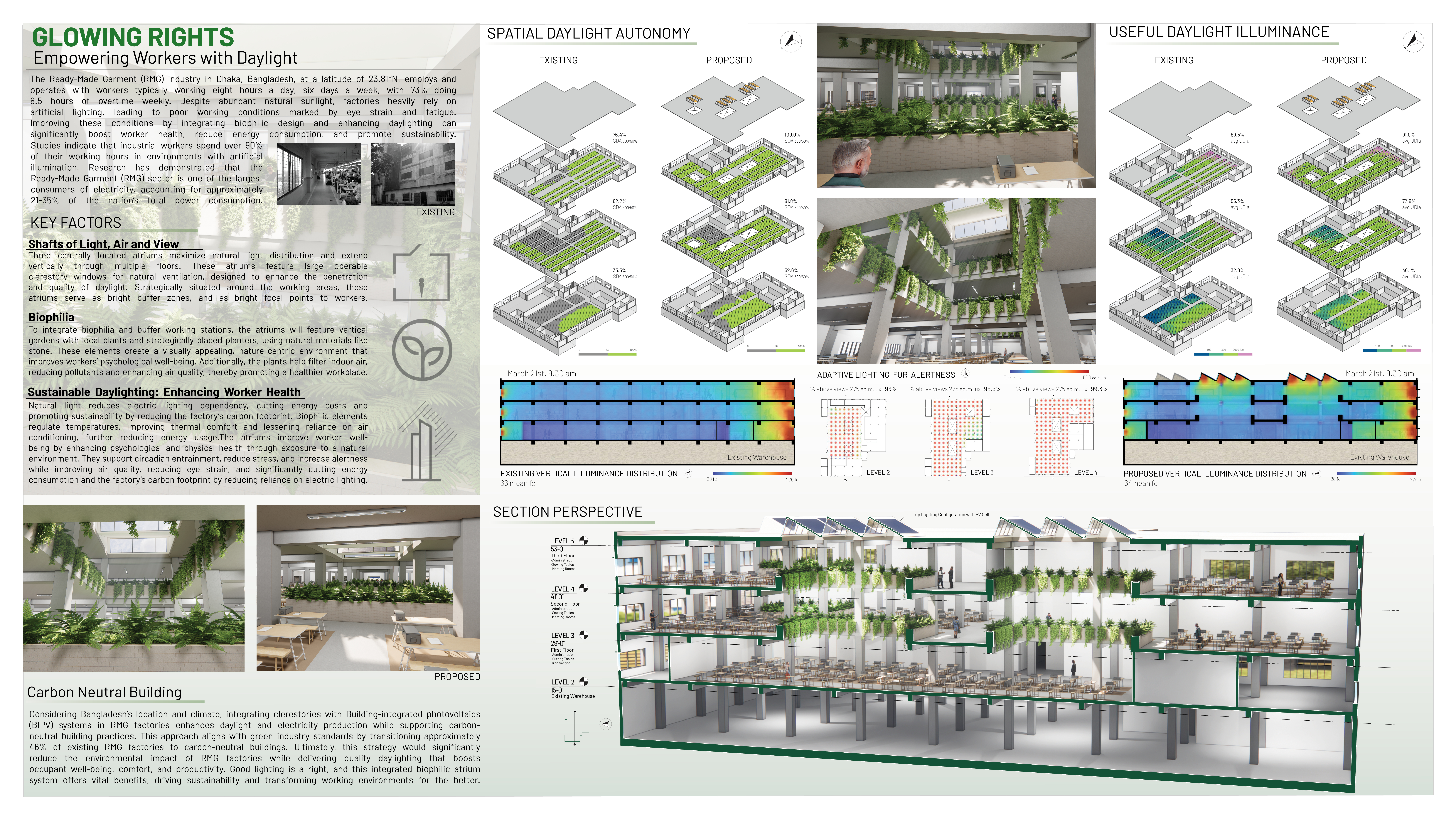2024 - Glowing Rights

Category
Daylight in Buildings - Region 3: The Americas
Students
Tomas Hoyos & Kyle Thomas
Teacher
Rifat Tumpa
School
Texas A&M University (TAMU)
Country
United States
Download
Download project board
BACKGROUND
The Ready-Made Garment (RMG) industry in Dhaka, Bangladesh, at a latitude of 23.81°N, employs and operates with workers typically working eight hours a day, six days a week, with 73% doing 8.5 hours of overtime weekly. Despite abundant natural sunlight, factories heavily rely on artificial lighting, leading to poor working conditions marked by eye strain and fatigue. Improving these conditions by integrating biophilic design and enhancing daylighting can significantly boost worker health, reduce energy consumption, and promote sustainability.
SHAFTS OF LIGHT, AIR AND VIEW
Three centrally located atriums maximize natural light distribution and extend vertically through multiple floors. These atriums feature large operable clerestory windows for natural ventilation, designed to enhance the penetration and quality of daylight. Strategically situated around the working areas, these atriums serve as bright buffer zones, and as bright focal points to workers.
BIOPHILIA
To integrate biophilia and buffer working stations, the atriums will feature vertical gardens with local plants and strategically placed planters, using natural materials like stone. These elements create a visually appealing, nature-centric environment that improves workers’ psychological well-being. Additionally, the plants help filter indoor air, reducing pollutants and enhancing air quality, thereby promoting a healthier workplace.
SUSTAINABLE DAYLIGHTING: ENHANCING WORKER HEALTH
Natural light reduces electric lighting dependency, cutting energy costs and promoting sustainability by reducing the factory’s carbon footprint. Biophilic elements regulate temperatures, improving thermal comfort and lessening reliance on air conditioning, further reducing energy usage. The atriums improve worker well-being by enhancing psychological and physical health through exposure to a natural environment. They support circadian entrainment, reduce stress, and increase alertness while improving air quality, reducing eye strain, and significantly cutting energy consumption and the factory’s carbon footprint by reducing reliance on electric lighting.
CARBON NEUTRAL BUILDING
Considering Bangladesh’s location and climate, integrating clerestories with Building-integrated photovoltaics (BIPV) systems in RMG factories enhances daylight and electricity production while supporting carbon-neutral building practices. This approach aligns with green industry standards by transitioning approximately 46% of existing RMG factories to carbon-neutral buildings. Ultimately, this strategy would significantly reduce the environmental impact of RMG factories while delivering quality daylighting that boosts occupant well-being, comfort, and productivity. Good lighting is a right, and this integrated biophilic atrium system offers vital benefits, driving sustainability and transforming working environments for the better.

























